Similar Posts
(This is the fourth part of a series. Part 1: Most of The Time The Earth Is Flat. Part 2: Where is Heaven? Part 3: Heaven and Earth in The Icon)
In my previous posts in this series I have discussed what Heaven and Earth traditionally refer to, how they point firstly to metaphysical categories rather than only to a kind of scientific description of phenomena. I have also warned how one must not for that reason hastily conclude that traditional cosmological images of Heaven and Earth are only metaphors or abstractions. Rather the use of the physical Heaven and Earth as analogies for the two poles of creation is always anchored in human experience and language in a way that connects them to higher truth.
One will often read in commentaries about Orthodox church architecture that the central dome represents Heaven while the square shape of the nave represents Earth. Though this is commonly given as an explanation, we are rarely told why this is so. It is a worthwhile question as it engages one of those images which clashes violently with modern cosmological understanding. The question is also worth pondering because the relation of the circle to the square is found quite universally from China to India and Persia, from Rome to Christianity and Islam.
In the Bible, the Earth is described in many ways. Sometimes it is a circle (Is. 40:22). Other times though, it is suggested that the Earth has 4 corners, for example in the book of Revelations it is said: “After this I saw four angels standing at the four corners of the Earth, holding back the four winds of the Earth to prevent any wind from blowing on the land or on the sea or on any tree.” (Rev. 7:1)
In this example, the four corners are associated with four angels and the four winds which come from four directions. Some will quickly point out that this is just a poetic expression and is not meant to be taken as an “actual” description of the Earth. These types of answers are dangerous because they presuppose that the image used does not really matter and has no meaning. What matters in this logic is making sure we can defend the Bible facing scientific descriptions. In trying to defend the Bible from its attackers one must be careful not to gloss over what is there. With careful attention we will see how the Earth being connected to four angels and four directions already gives us everything we need to understand the square Earth. Hopefully by hammering away at these ideas I will eventually convince people that multiple images of Heaven and Earth are possible simultaneously in a given culture.
The circle, the dome and the sphere
Most people have at some point read something about the circle, how a circle is an image of unity, of completeness, of the undivided or even sometimes of eternity and so in light of our actual experience of the sky, it is intuitively easier to understand why the Heavens are a dome. Our dome in Orthodox architecture is based on Roman precedents. The most famous is of course the Pantheon of Rome, where in the center of the dome there is a hole, the occulus (eye). In the Pantheon the relation of the circle to the square is suggested not so much by the actual shape of the building (which is essentially a cylinder, though a cylinder is also square from the side), but by the middle circle giving way to rows of larger squares along the rays coming down the dome itself. The circular hole has been interpreted as the sun, which is fair in its own right. But we should also see the occulus as the axis of the sphere, the invisible central pillar which leads beyond the visible Heavens into the non-manifest spiritual truth. Already in pre-Christian Neo-Platonism the axis which connected all levels of reality together was often named Logos or the Divine Mind, and so it is not surprising that Christians would eventually put the image of Christ there, of Christ returning from the Heavens as the great Judge, bringing with him the new Heavens and the new Earth.
The dome finds its human analogical equivalent in the particular spherical shapes of certain crowns, like the Orthodox bishop’s mitre, which emphasize how the round human head is analogical to Heaven itself, the source of mind and logos, the principle of the body (Col. 1:18). The body with its four limbs can be seen as analogous to a square.
Following similar lines, we also use the circle to represent the halo of saints, and in early Christian art it was not uncommon to represent living people still here on Earth with square halos.
But one must be careful with the circle and the sphere, for there is also a round Earth which we see in the classical medieval “OT” map, and the Earth can also be represented as the bottom half of a sphere. In some early representations of Christ he sits on an orb. Often we are told that this orb is the Earth, a forgivable mistake. The orb is the more general notion of the “world” or the entire Cosmos represented as a sphere in the sense of totality and unity of all possibilities. This sphere could be said to contain both Heaven and Earth in the cosmic sense.
Another clear version of this symbol is the globus cruciger, the orb held by the Christian ruler, where the axis of the sphere, like the occulus or the Pantocrator in the dome, has become a cross.
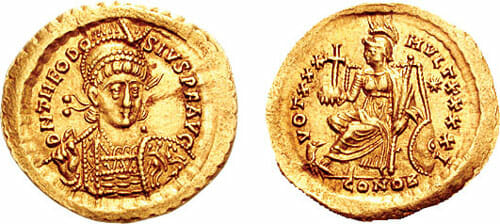
Coin of Theodosius II with globus cruciger, 5th century. He is said to be the first to use the globus cruciger.
Later crucigers will often be represented with a band separating the top of the sphere from the bottom, showing the place where Heaven and earth connect. Sometimes there are also four bands going down from the cross in each opposite directions. These four bands appear also on ancient crowns or even on the Orthodox Diskos and already one can see how the fourfold, four directions, four limbs, etc. can be represented in other, yet equivalent images that are not explicitly a square.
The bottom half of the sphere as a representation of Earth emphasizes its function as a container, an open space, the well or the cave for example. It is the container for the Heavenly and finds liturgical form in the Chalice of course, but more strongly in the Mother of God herself who’s womb gave flesh to the Logos from Heaven. And so the entire cosmos can be seen as this sphere, with Heaven (The place of the Father) above and Earth (the place of the Mother) below with the Logos as the Axis which connects and brings them together1.
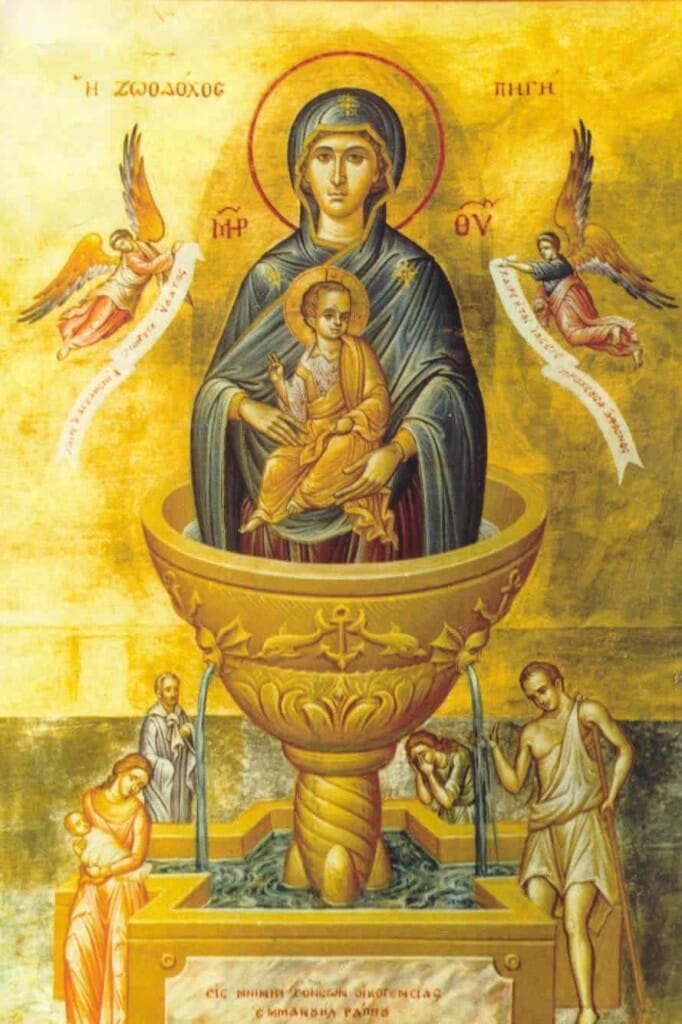
In many images of the Theotokos of the Life Giving Spring we see the Mother of God in a round shaped chalice type fountain, and at the bottom, the pool is changed into a cross shape. here both the circular and square aspects of the Earth are placed together.
The square and the box.
Despite some suggestions of the body or perhaps the feet as being roughly rectangular, the rectangle is most often a human-made shape. We see the perfect circle of the sun and the moon as natural forms, yet the truly explicit square is the house, the city, the box and is the most stable shape, like a table is with its four legs. It is a shape at rest. This is obvious enough, so it will not surprise us in the last Eschatological revelation, the image of the heavenly Jerusalem descending to Earth appears in its finality as a cube (Rev. 21:16), containing the Tree of Life in the middle as the axis, but ending in its final periphery with precious stones for its twelve gates. This cube for us is also the Church, which having a basic square-cross shape beautifully connects the 4 sides of a square with the 12 gates of the heavenly Jerusalem, for a cross has 12 sides2.
In ancient times, there was a geometrical riddle consisting of “squaring the circle” which meant finding a square with an equivalent area as a given circle using a compass and a straight edge. This has never been solved technically, but in our case we must see further than the technical veil of this riddle and find in it the desire to move successfully from one to the many, moving from the hidden and implicit to the manifest and explicit, from the invisible “essences” or “logoï” of things to the things in their earthly manifestations. It is in this manner that we need to see the relation of the circle to the square, the passing of one to many, of spirit to body. So with this basic movement in mind, we can examine the passing of one to four through two basic approaches. The first approach shows what the one brings to the many. The second approach shows what the many brings to the one. Both approaches have two sides and can be viewed in terms of space or motion, that is moving from the spiritual to the physical or moving from Eternity into time (though it is difficult to fully separate these two sides).
The first approach is how four can be seen as an extension of one. In terms of space, we can see this as four aspects of one thing or one thing seen from four sides. This is how we frame the symbolism of four when discussing the Gospels for example. Each Gospel emphasizes specific aspects, a limited “angle” if you will, the fullness of which lies beyond the multiple or at the center of the multiple. Is it not said how if every one of the things Christ did were written down, “ the world itself could not contain the books that would be written”? (Jn. 21:25). And just like the Gospels which they symbolize, the four beasts of Ezekiel show us four aspects of the Divine Glory. This imagery is strongest in the icons of Christ in Majesty, where the four corners poking out of the circular glory are red and have the symbols of the Evangelists.
Closely related to this, yet from the point of view of movement, we can understand the four aspects of the one as moving out from itself, like the x and y axis of a graph or the cardinal directions. We can see this in the 4 rivers of Paradise which flow out from Paradise into the world.
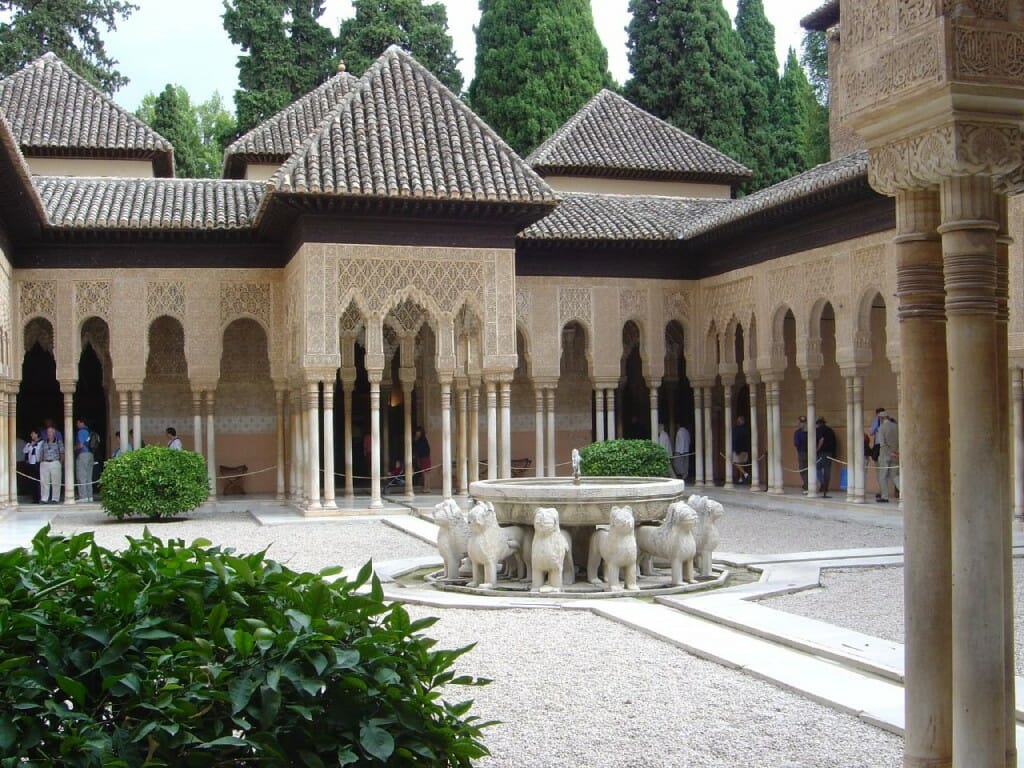
A paradise garden with central fountain feeding four water channels, Alhambra Palace, Granada, Spain. 14th century.(Image taken from Andrew Gould’s article on Gardens and courtyards)
In early Christian art, these rivers where often placed at the foot of the cross ( or at the foot of the lamb — see image above from Verona, or of Christ — see image above from Ravenna) so that Christ as that point connecting the x and y axis, or the cross as vertical Axis itself, just as in the cruciger or the Diskos, was creating by its very extensions the “four corners” of the world. (For some interesting insight on this question, read Andrew Gould’s recent article on gardens and courtyards).
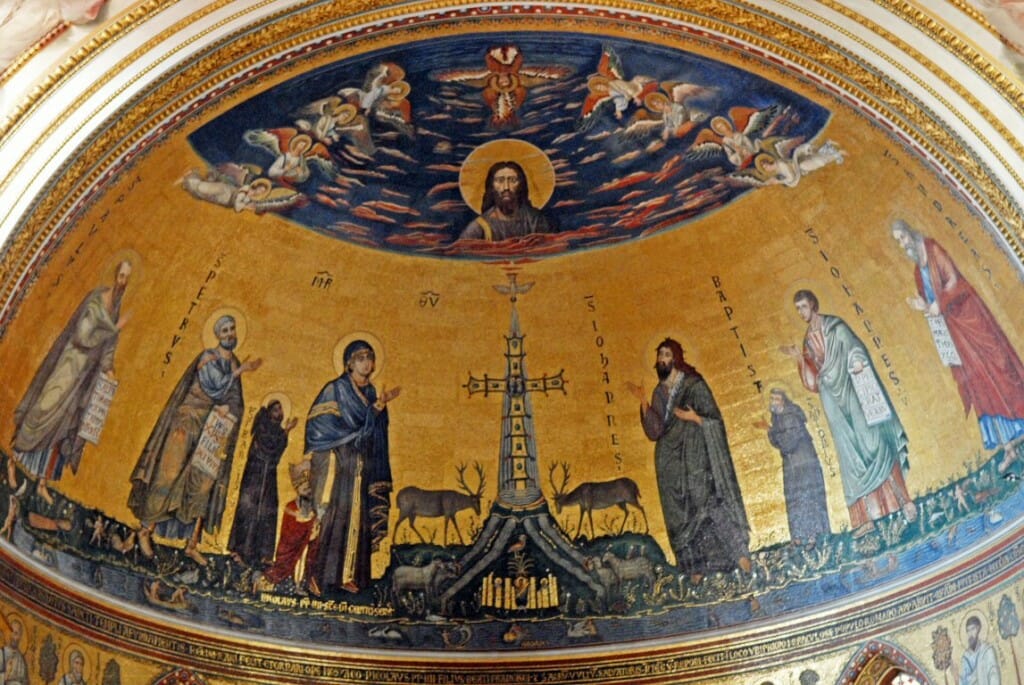
The cross and the four rivers from the 5th century mosaic of St-John Lateran in Rome (though heavily restored, the central section is thought to be from the original.)
In this vision of spreading out the one into the many, once again four becomes related to twelve, and so similarly to the four Gospels moving out into the four directions, we can envision twelve disciples moving out after Ascension and Pentecost to the “ends of the Earth”.
The second basic approach I mentioned is where we see what the many brings to the one. Here the fourfold division can be seen as support for the one, this is unity established on four principles that manifest it while holding it up, “stabilizing” it we could say. Of course the most basic incarnation of this is the human body itself which supports the head and “acts out” the commands of the mind. But one of the most beautiful versions of this symbolism in spatial terms is how in the Church building we often represent the four Evangelists on the pendentives, the four corners which literally hold up the dome of the church. When looking at this structure from below, one experiences a powerful image of a circle within a square which is also being held up by that square. These are indeed the “pillars of Heaven” (Job 26:11) of which so many traditions speak.
Another image of the square acting as support is in the notion of the footstool. In Isaiah, God says: “Heaven is my throne, and the earth is my footstool.” (Is. 66:1) But God also mentions the Ark of the Covenant, which was a rectangular box as his footstool or at least as related to his footstool (1 Chron. 28:2) We can see this footstool reappear in icons of Christ in majesty as a rectangular box or step under his feet. We find in this footstool a very dense layering of symbolism, from suggesting the Earth itself to the Ark and to the Church.
But here again, as we did in the the first approach, we can find a version of this symbolism of support which is related to movement. In this case the fourfold support that was the footstool becomes something to be mounted. In the Psalms, King David describes God as riding the four faced Cherub (Psalm 18:10). (the same faces that act as the symbols of the evangelist). This is shown more explicitly in the vision of Ezekiel (Ezekiel 1) , where The Cherub is surrounded by four wheels, all of which together acts as a kind of mystical chariot for the divine presence. In some versions of the icon of Christ in majesty, all of these symbols are brought together in placing the angelic wheels against the footstool of Christ who is surrounded by the four faces of the Cherub, placing Christ in the very middle of a both spatial and dynamic divine glory. (See Christ in Glory icon posted above. Notice also how in following the verse in Isaiah, the throne as an image of Heaven is given a rounded shape.)
What is a corner?
I have tried to show some of the symbolism surrounding the square, of it being a moving from the invisible to the visible, from the implicit and spiritual to the outward and manifest. But in order to fully grasp the meaning of the square we need to look at the more fundamental question of what is a corner, or what is an edge. Here things become tricky and we begin to play in some paradoxical truths.
There is an inevitable ambiguity about multiplicity. Multiplicity can be seen as an extension of unity but it can also act as a division of that very unity. In this vision of things, the Logos is a blade that cleaves the world3, that cuts it into multiple pieces. The cross becomes a balance, Christ becomes the Judge. In this sense we can see the Logos as cutting a square from a circle, that is making a stable and manifest limit out of the limitless or undivided waters of primordial Earth, pulling land from the sea. As Sophia calls out: “I was there when he gave the sea its boundary so the waters would not overstep his command, and when he marked out the foundations of the Earth.”(Prov. 8:29) It is in this vision that the square “lamb” is cut out of the round bread during the Divine liturgy to become the support for Christ towards communion.
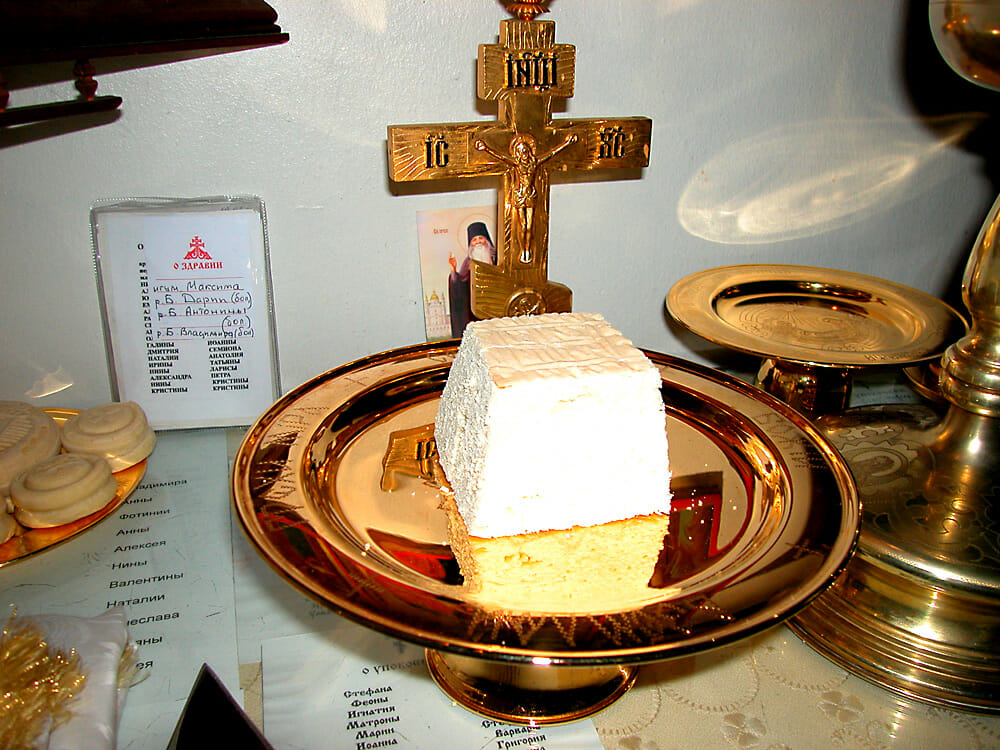
The lamb cut out from the round proshpora. Other pieces from the prosphora will be added to represent participation of saints and the rest of the church.
The ambiguity about multiplicity is that this division of what is one can become a fragmentation of unity, it can be the decomposition found in death. A particular manifestation or creation within multiplicity, when focused, when seen independently as itself will in its concentration become strong. We see this in any form of identity forming, in nationalism, in family pride, in political opinions and any inside/outside division which we find in the world. This is not necessarily bad, God himself called out a chosen people in the OT. In this sense, the corner, the particular taken to its “point” of concentration can also be a weapon, the edge of the square can also be a blade. But if the corner, if a specific aspect of something “forgets” the whole, sees itself only in pride as being autonomous from the whole, then there will be trouble. The sin of Satan and Adam was to want their own particular being within the multiplicity of Creation to be fully equal to the Undivided Trinity, that they should be God themselves.
This aspect of the corner can be seen most strongly in the Old Testament Altar. On that square altar there were four horns, one horn on each corner. Of course the horn is the most basic weapon, an animal’s dead hardened shell forming into a point which can pierce. We can understand the horns of animals as being akin to the thorns on plants, pointy extrusion meant to defend from death (the limit of the garments of skin as I have so often discussed.). During the ritual sacrifice on the Old Testament altar, the blood of the animal was put on the four horns of the altar (.ie Ex. 29:12) . This is the manner in which death was transformed, how the multiple, the four corners were united to the one by being covered with the blood of the one victim. The one in fact sacrifices itself for the many, agrees to be “spread out”, to cover the distance and separation. And this victim being then burnt would send its smoke up to God, in a way uniting the multiple by “covering” it, and then being sent up to unite those four corners to the transcendent God in Heaven. We can understand the four corners in the Christ in Glory icon (above) as those four horns that are covered in blood, death transformed into glory, the fourfold division of space united in their very multiplicity to the Divine Logos. And when we see the four rivers flowing from the cross or from under Christ in early Christian art, we need to see this water/blood as coming from the wound on the side of Christ himself, flowing blood and water that travels to the end of multiplicity, the end of death and saves it by death (blood) while simultaneously giving it life (water) so to gather all things unto the Father.
Conclusions
In terms of conclusion, an easy way to sum up the square Earth is that it is the Earth which is fully manifested in its explicit and divided multiplicity. It is the Earth that has been fully “named”, the Earth that has been fully traveled, fully connected, that has reached its full extension. In this way we could say that Earth is “squarer” today than it has ever been. And just so that we avoid this sounding too abstract, we still have a fully square, socially integrated version of this aspect of the Earth, where the 4 directions reach their limits. It is called a map. The map as a frame for reality, much different from the wild globe we see in NASA pictures, delineates the Human Earth, the Earth of Human community, Human distances, Human language and Human political divisions. And generally when Human beings discuss the Earth today, most of the time this lasting square Earth is the Earth they are talking about.
———————————————————————–
1One should not be afraid to see how this is the basic notion of Yin and Yang found in Chinese philosophy. Understanding these concepts can be of great help to us in a time where Heaven and Earth are only understood as physical phenomena.
2The relationship between 4 and 12 was already shown in the Old Testament Ephod which had on it a rectangle breastplate used by priests for divination, where the 12 stones where inserted.
3The most primordial version of this is Creation itself which is very much a series of distinctions and divisions, light from dark, upper waters from lower waters, Earth from see, sun from moon culminating in the cutting of Adam into Male and Female. But Christ also makes strong statements of this in the Gospels. “I did not come to bring peace, but a sword.” Mat. 10:34. Also in Rev. 19:15 “Coming out of his mouth is a sharp sword with which to strike down the nations.”

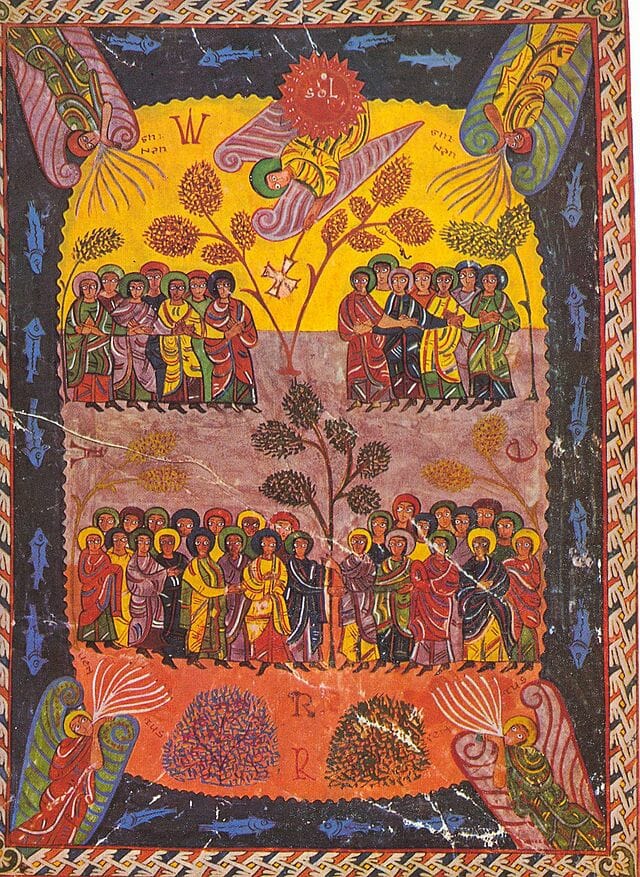
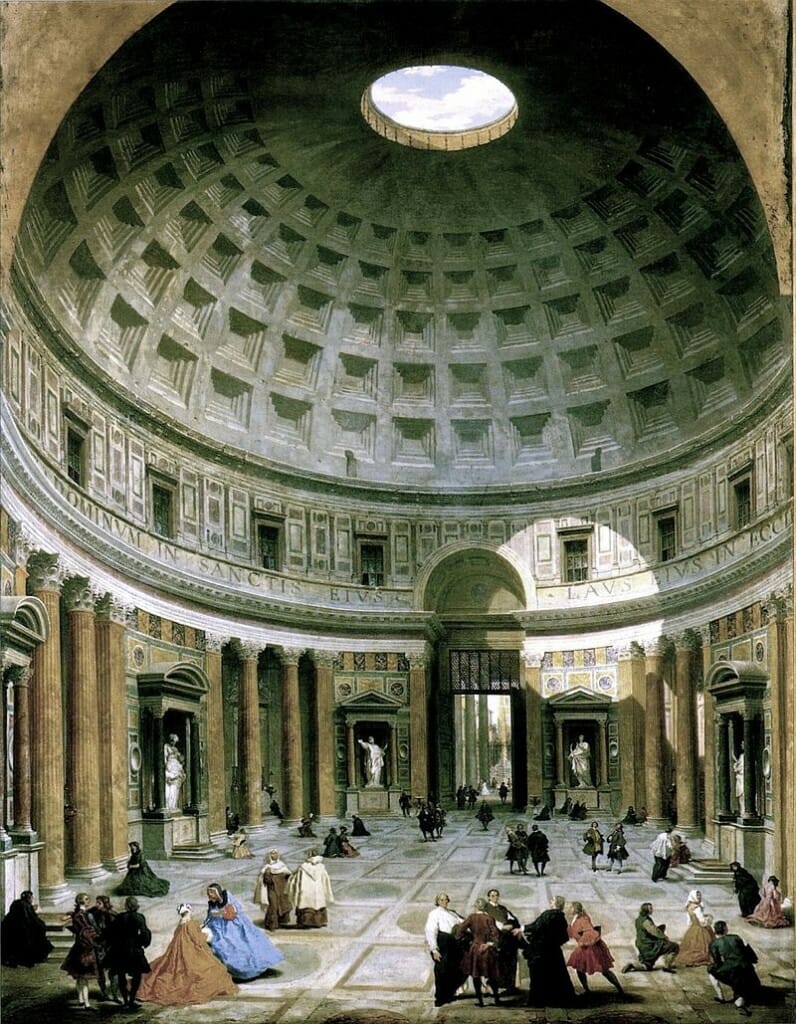

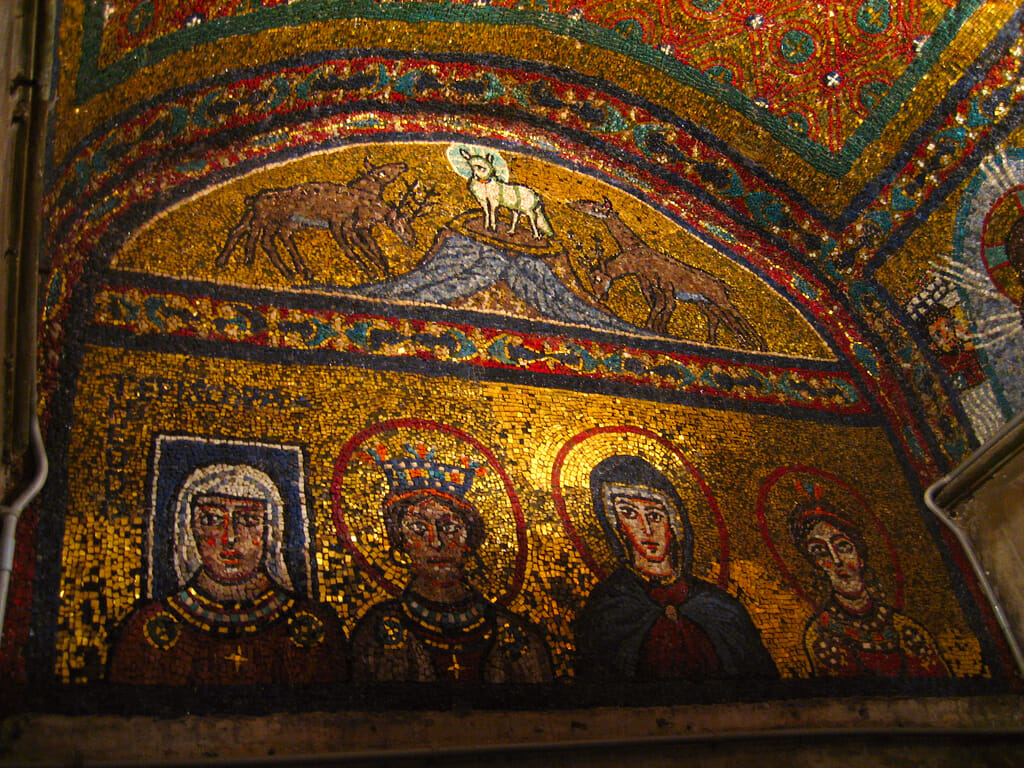
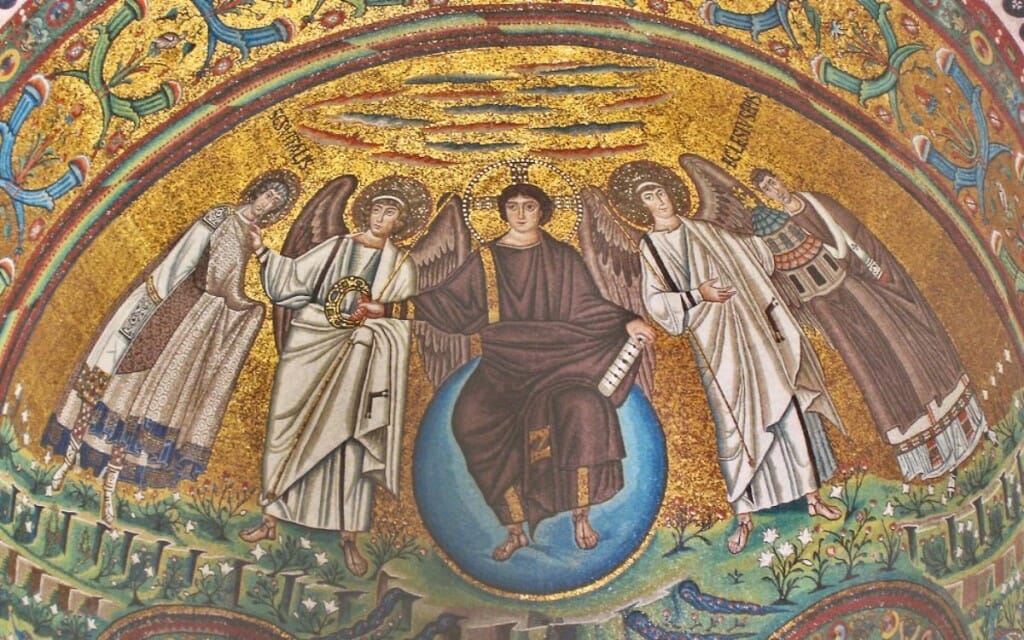
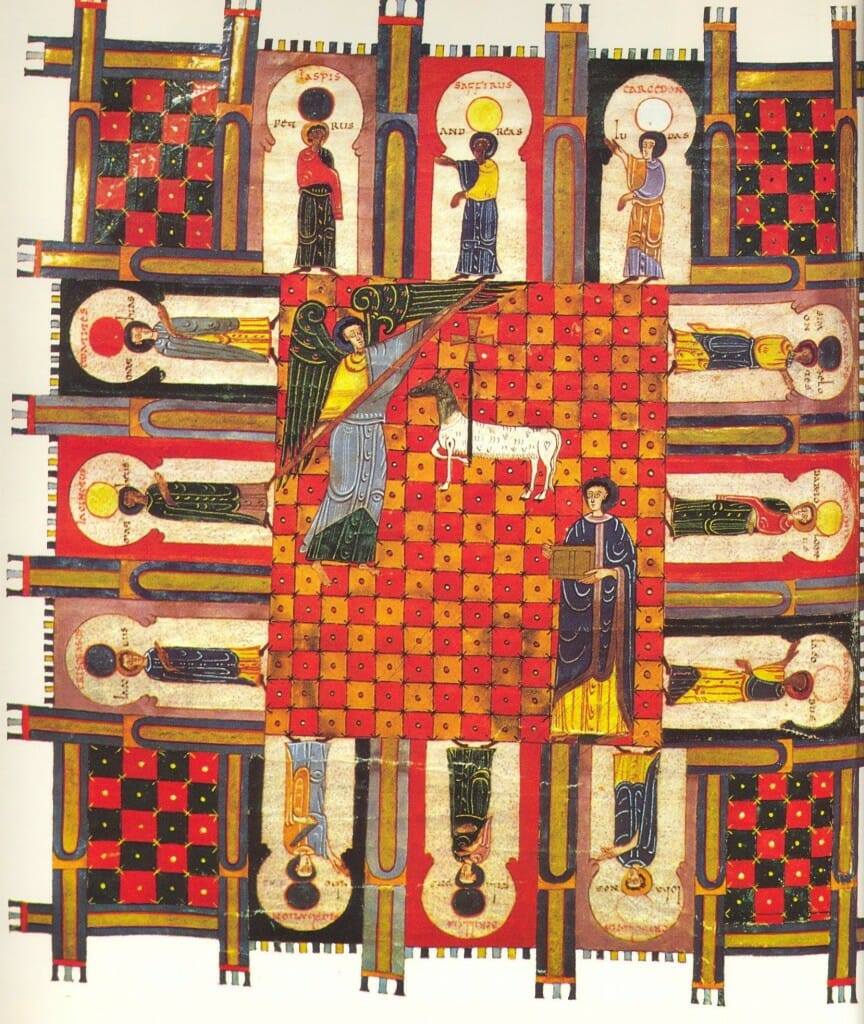
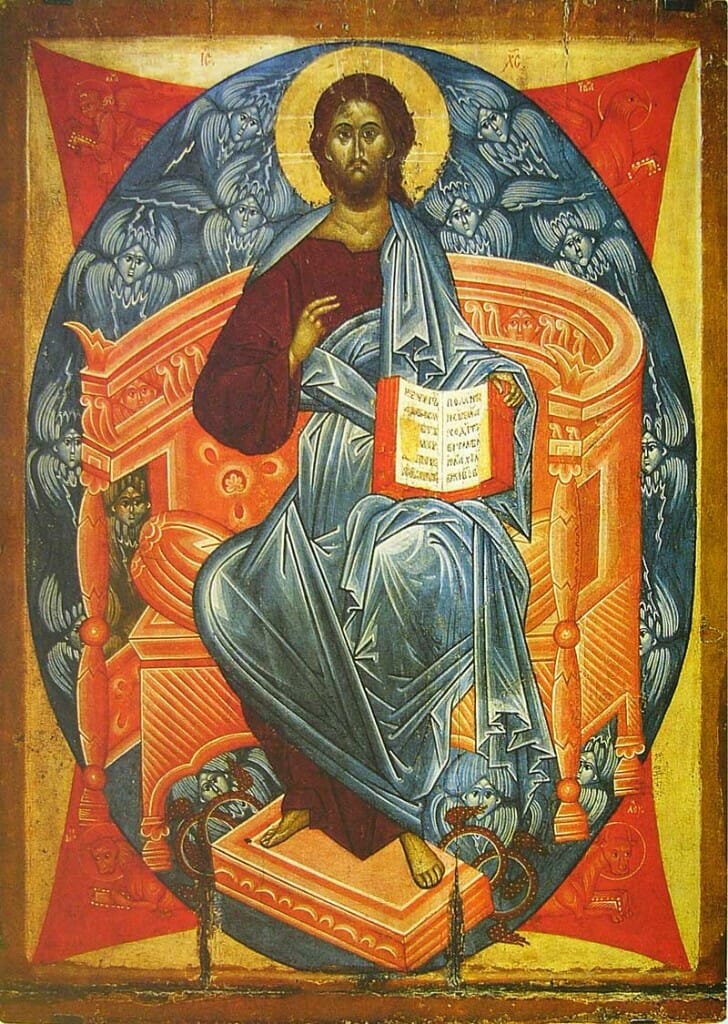
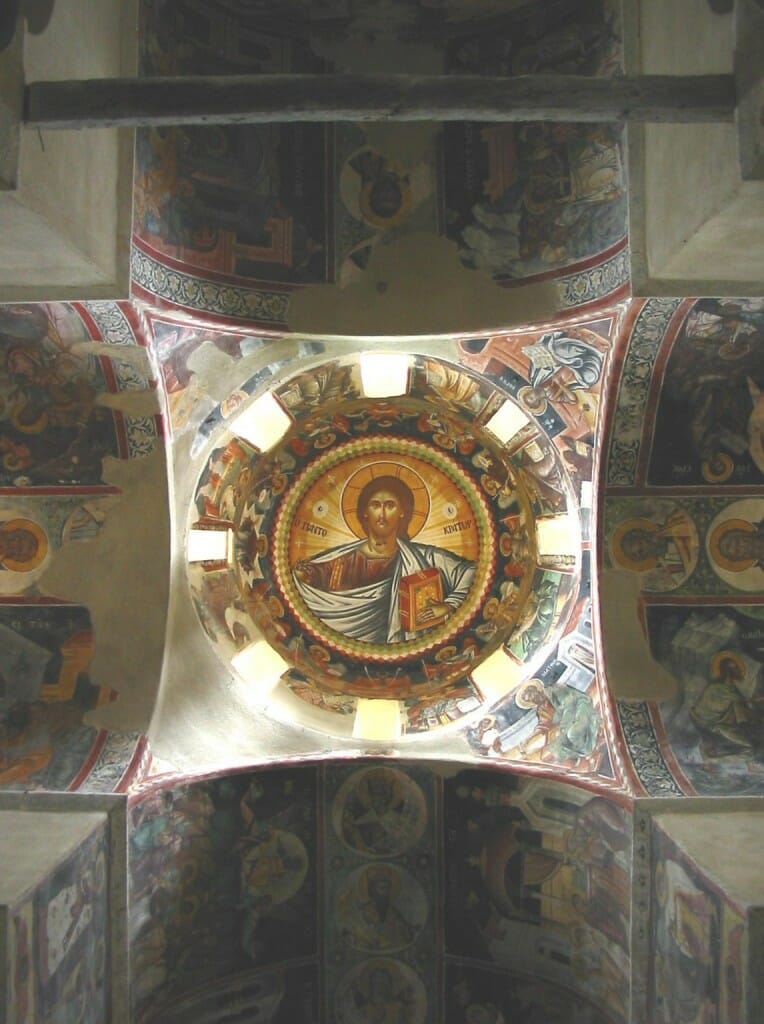
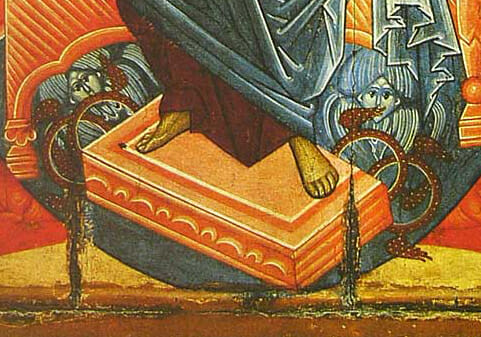
this is nonsense
“The way of heaven is round, and the way of earth is square.”
Huainan zi, 2nd century BC Chinese prince.
Sweet article, Jonathan.
Can I ask you a question about the globus cruciger? Is the same meaning present when angels are holding one? Is there any difference in meaning when this orb in an angel’s hand has no equator line or meridians connecting the poles but simply looks like a planet or moon with the XP or similar inscription? What about when the globe is transparent and actually looks quite like a flat semi-transparent plate – does that refer to a different set of meanings, or is it just a different style?
Thanks very much.
I think it is the same. We need to understand the globe as a type of totality of space, we could call it potential space. If you look at the famous icon of st-Michael with the translucent globe, there is an Alpha-Omega on it, which relates the notion of a totality of space with totality of time. But when you see angels holding the globe, it is mostly to show how the angel is an extension of divine glory and power. The globus is first and foremost a symbol of power, a symbol of the left hand, and must be seen as complementing the staff, scepter or sword in the right hand as symbols of authority in the ancient sense. See my article “Authority on the Right. Power on the Left” I hope this makes sense.